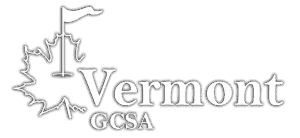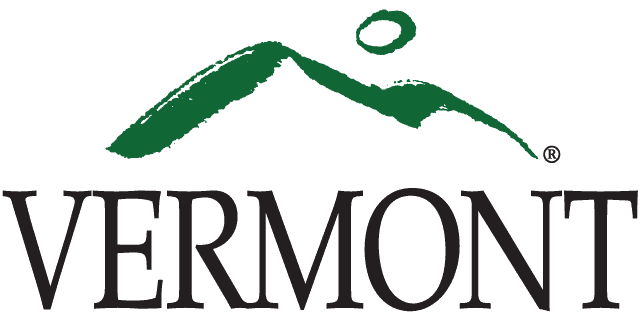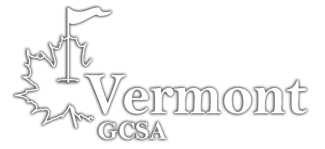FROM: Lindsay Kurrle, Secretary, Agency of Commerce and Community Development
TO: Vermont Businesses and Employers
DATE: May 6, 2020
RE: Update 4 – New Work Safe Additions to the Stay Home, Stay Safe Order
Click here for the VGA Covid-19 Guidelines for reopening golf in Vermont.
In the days and weeks to come we will work to restart Vermont’s economy in the wake of COVID-19. Understanding the need to restart the economy as soon as possible and improve our overall social wellbeing, we cannot allow for a resurgence of COVID-19 that would undermine or lose the important public health outcomes achieved to date. Our work to transition Vermont out from under the Stay Home order swiftly and responsibly will take just as much effort and goodwill as we have all expended in recent weeks. Working closely with the Health Department, the State Emergency Operations Center, and dedicated professionals across State government, we have developed, and will continue to refine, critical steps to ensure the health and safety of Vermonters and the continuity of our healthcare system. As we move forward, businesses and employees must understand that how they work is essential to resuming and maintaining business operations. Preventing outbreaks and limiting the spread of COVID-19 is the only way to avoid future business and social disruption. The success of this phased restart will depend in large part on the ability of employers and employees to adhere to the public health, safety, and social distancing measures essential to limiting the spread of illness. To that end, the following is required of all businesses currently operating and those re-started:
MANDATORY HEALTH & SAFETY REQUIREMENTS FOR ALL BUSINESS, NON-PROFIT & GOVERNMENT OPERATIONS
All businesses must follow Vermont Department of Health and CDC guidelines:
- Employees shall not report to, or be allowed to remain at, work or job site if sick or symptomatic (with fever, cough, and/or shortness of breath).
- Employees must observe strict social distancing of 6 feet while on the job. Businesses and non-profit or government entities shall ensure customers observe strict social distancing of 6 feet while on location, to the extent possible.
- Limit the occupancy of designated common areas, such as break rooms and cafeterias, so that occupants maintain strict social distancing of no less than 6 feet per individual. The employer shall enforce the occupancy limit and require employees to wipe down their area after use or shall ensure cleaning of the common areas at regular intervals throughout the day.
- Employees must wear face coverings over their nose and mouth when in the presence of others. In the case of retail cashiers, a translucent shield or “sneeze guard” is acceptable in lieu of a mask. Businesses and non-profit and government entities may require customers or clients to wear masks.
- Employees must have easy and frequent access to soap and water or hand sanitizer during duration of work, and handwashing or hand sanitization is required frequently including before entering, and leaving, job sites.
- All common spaces (when open) and equipment, including bathrooms, frequently touched surfaces and doors, tools and equipment, and vehicles must be cleaned regularly and, when possible, prior to transfer from one person to another, in accordance with CDC guidance.
- Prior to the commencement of each work shift, pre-screening and health survey shall be required to verify each employee has no symptoms of respiratory illness (fever, cough, and/or shortness of breath). At the present time non-contact thermometers are in short supply, however employers shall immediately order, and use their best efforts to obtain, thermometers in order to conduct routine temperature checks.
- Signs must be posted at all entrances clearly indicating that no one may enter if they have symptoms of respiratory illness.
- When working inside, open doors and windows to promote air flow to the greatest extent possible and limit the number of people occupying a single indoor space.
- No more than 2 people shall occupy one vehicle when conducting work.
- No symptomatic or COVID-19 positive workers are allowed on site and any worker(s) who have contact with a worker or any other person who is diagnosed with COVID-19 are required to quarantine for 14 days.
- All operations shall designate a health officer on-site at every shift responsible for ensuring compliance with the Executive Order and the Addenda thereto and applicable ACCD Guidance. This person shall have the authority to stop or modify activities to ensure work conforms with the mandatory health and safety requirements.
- All business, non-profit and government operations must use remote work whenever possible.
- All employees, including those already working (except healthcare workers, first responders, and others already trained in infection control, personal protection/universal precautions), must complete, and employers must document, a training on mandatory health and safety requirements as provided by VOSHA, or another training program that meets or exceeds the VOSHA-provided standard by May 4, 2020. Employers who need translations of the training have one week from the release of the translated training to complete this requirement.
- For all mass transit CUSTOMERS/ RIDERS (in addition to the mandatory requirement for operators and staff) face coverings are mandatory on public transit conveyances and in stations and terminals, effective May 4, 2020.
ADDITIONAL HEALTH AND SAFETY CONSIDERATIONS FOR ALL BUSINESS, NON-PROFIT AND GOVERNMENT OPERATIONS
- Use of shared workspaces, desks, offices, etc. is discouraged to the maximum extent practicable.
- Face-to-face staff meetings should be limited, and physical distancing must be observed.
- Consider staggered work shifts, break times, etc. and expanding hours to reduce number of individuals working together and reduce contact with members of the public.
- To the extent possible, provide access to hand washing and/or hand sanitizer for vendors, and customers.
- Limit staff travel between multiple sites.
- Ensure a safe process to receive supplies and deliveries.
- Consider accommodations for employees at higher risk from COVID-19 infection (as currently defined by the CDC) to work remotely or have a job tasks that minimize public interaction.
BUSINESS CUSTOMER & GENERAL PUBLIC MASK USE Customers, and the public in general, are encouraged to wear face coverings any time they are interacting with others from outside their household.
Phase 4: Effective May 7, 2020
4.1 Outdoor Recreation and Fitness Vermonters are encouraged to participate in outdoor recreation and fitness activities, while limiting themselves to those activities that can be enjoyed while adhering to social distancing and hygiene requirements, and which require low or no physical contact with anyone outside their immediate household. This includes, but is not limited to biking, hiking, walking, running and other outdoor fitness activities; golf, tennis, skate parks and other outdoor no-contact sports; horseback riding, boating and paddle sports, fishing, hunting, photography and nature walks.
- These opportunities are for Vermont residents, and those who have met the minimum 14-day quarantine requirement. Visitors from other states, and countries, are still being asked not to come to Vermont. If they do they are required to self-quarantine for at least 14 days after arriving in Vermont before engaging in any activities.
- Vermonters shall limit outdoor recreation and fitness activities to in-state opportunities. Vermonters are encouraged to pursue day trips close to home, however are no longer being asked to limit outings to within 10 miles of their homes. Any individual returning to, or traveling to, Vermont from another state or country for non-essential reasons continues to require 14-days of self-quarantine before engaging in any activities.
- Vermonters participating in outdoor recreation activities that are not physically strenuous are encouraged to wear face coverings over their nose and mouth when in the presence of others. Masks may be removed for strenuous activities and exercise.
Nothing in these guidelines should be interpreted to override the need to continue to observe requirements for use of trails or property. For instance: mud season limitations on the use of trail networks; that users obtain appropriate permission from private landowners where required; and the expectation that, where needed, users will check with state or local land managers regarding conditions that remain in effect. Additional information on good etiquette and safe practices for outdoor recreation is available at: https://fpr.vermont.gov/recreation/outdoor-recreation-and-covid-19 and https://vtfishandwildlife.com/outdoor-recreation-and-covid-19.
4.2 Outdoor Recreation Businesses, Facilities and Organizations Businesses, facilities and organizations which support or offer outdoor recreation and fitness activities that require low or no direct physical contact may return to operation under all applicable health and safety requirements established in Governor’s Emergency Order. These include, but are not limited to state and municipal parks, recreation associations, trail networks, golf courses, big game check stations, and guided expeditions. In addition, organizations, businesses and facilities catering to outdoor activity must adhere to the conditions set forth below:
- Complete and keep on file a reopening and training plan (organizations that have been closed must do so before reopening). VOSHA and the Agency of Commerce have provided a template at https://accd.vermont.gov/covid-19/business/restart.
- Require an “arrive, play and leave” mentality. Groups may not gather before or after activities (no tailgating, etc.).
- These opportunities are for Vermont residents, and those who have met the minimum 14-day quarantine requirement. Visitors from other states, and countries, are still being asked not to come to Vermont. If they do they are required to self-quarantine for at least 14 days after arriving in Vermont before engaging in any activities.
- Implement measures, including signage and registration processes, that reinforce parks, facilities, trails, etc. are only open to Vermonters and those who have met the 14-day quarantine requirement.
- Implement measures, including signage, discouraging contact sports and games. For example, outdoor basketball courts may be open to “shoot hoops,” but full contact games should be discouraged.
- Eliminate services or transactions that result in touch points and/or staff-customer interactions that are not absolutely necessary. This includes prioritizing credit card, telephone and electronic payment; cash transactions may only be accepted as a last resort.
- Reduce high contact surfaces and common areas, including closing waiting areas, removing picnic tables, closing play structures, and offering only rental equipment that can and will be thoroughly disinfected between users.
- Close indoor facilities (such as lobbies, pro-shops and other small retail operations, bars and restaurants), and only deliver services curbside, outdoors, or via online portals.
- Limit gatherings of people to 10 or less. Large outdoor facilities such as trail networks and municipal parks may have more than 10 people in them as long as there are no large gatherings in any one distinct portion of the facility exceeding 10 people.
- Restroom facilities may only be opened if they can be regularly cleaned and disinfected per CDC guidelines.
- Organized sporting events and spectator events are not permitted at this time.
- Pools and beaches are recommended to remain closed at this time.
Golf courses shall follow the reopening plans available at https://accd.vermont.gov/covid-19/business/restart. If your business or circumstance does not meet these criteria, additional guidance will be forthcoming.




